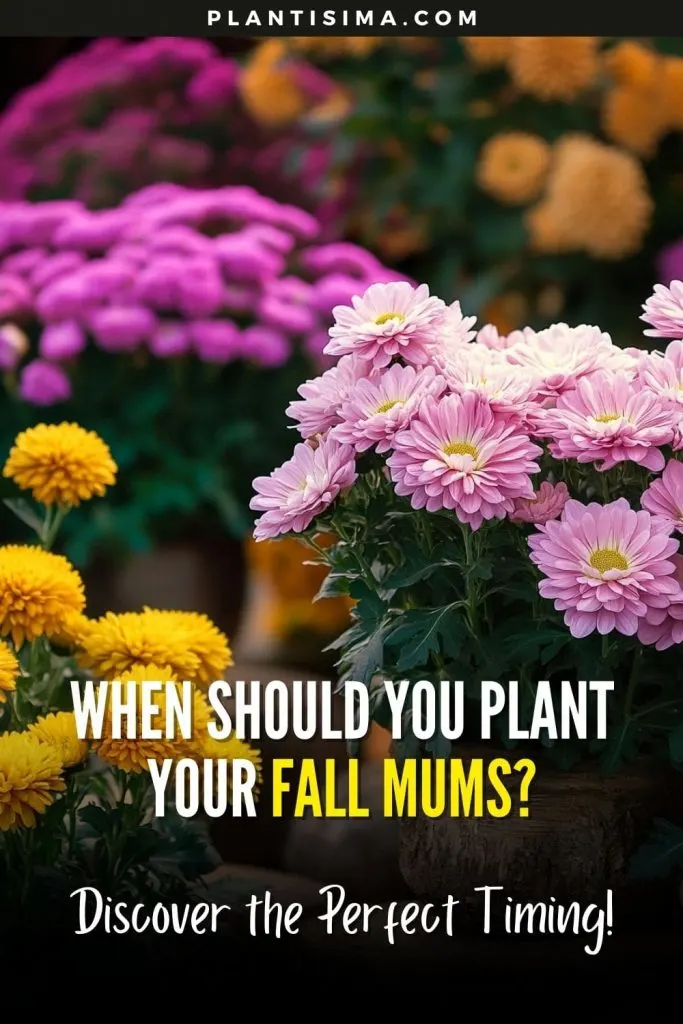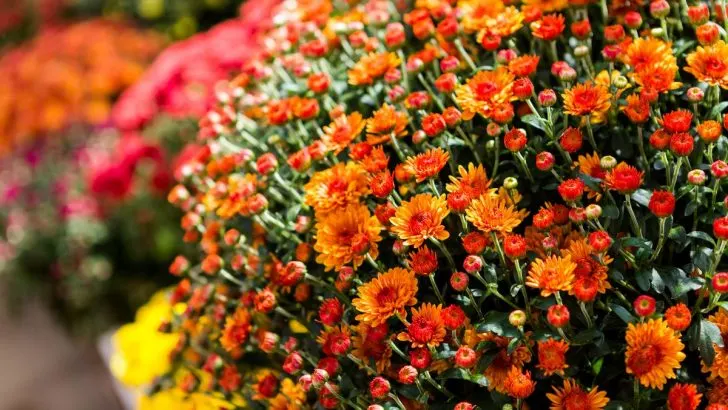Mums, also known as chrysanthemums, are a gardener’s delight during the fall season. These plants are widely available, easy to cultivate, and provide a burst of vibrant color that enhances your garden from late fall into early winter.
However, the success of your mums largely depends on proper planting timing. This ensures that your mums will thrive as perennials rather than just annuals.
While different varieties of mums and various USDA hardiness zones have specific planting requirements, let’s break down the essentials. Here’s all you need to know about planting fall mums!
The Quick Answer
The optimal time to transplant fall mums into your garden is at least six weeks before the first fall frost date. Depending on your zone, this could range from late August to mid-October.
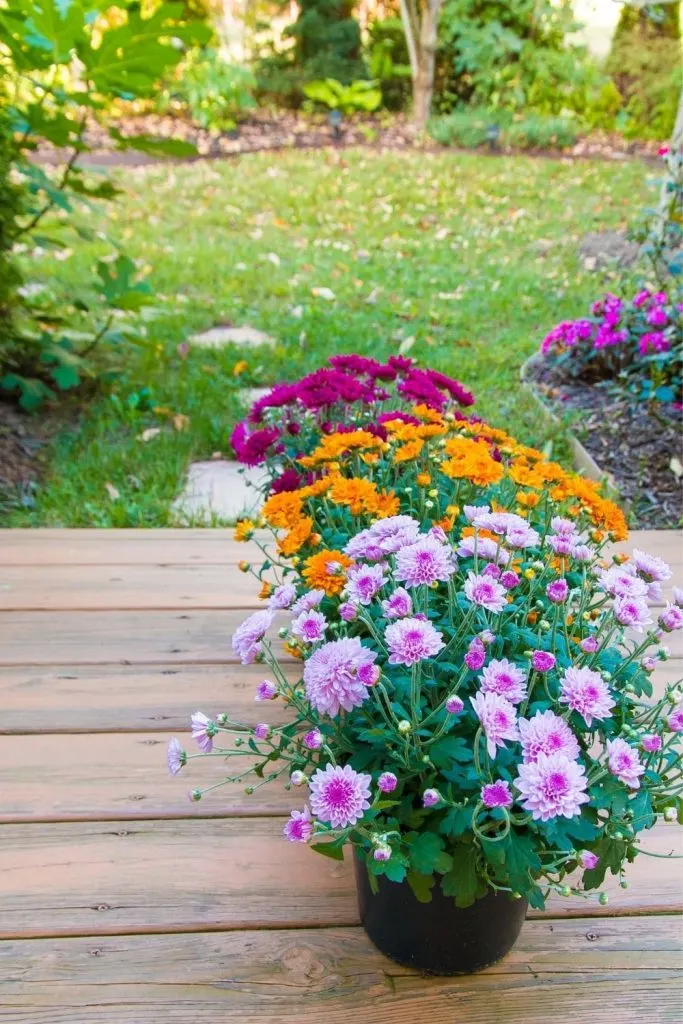
This timeframe allows your mums to establish a strong root system and start growing in their new location before enduring their first winter. Additionally, mums can also be planted in the spring, allowing you to enjoy their beauty throughout the year.
Understanding the Details
Chrysanthemums are excellent perennials for the fall, but several key factors need to be considered before planting them. Planting them well before the first frost is essential, but hardiness zones and the type of mums also play a significant role.
Timing Based on Zones
Chrysanthemums are generally hardy in zones 5-9. In zone 5, you should plant mums around mid-October, while in zone 9, planting can extend from late November to mid-December. Always let your first fall frost date guide you.
Plant your chrysanthemums about six weeks before the first fall frost date to give them ample time to adjust to their new growing conditions before winter. While planting them later is possible, it may hinder their ability to adapt.
If you miss the ideal planting window, consider planting mums in containers or raised beds. Transplant them as soon as you purchase them, as young plants are more susceptible to frost damage.
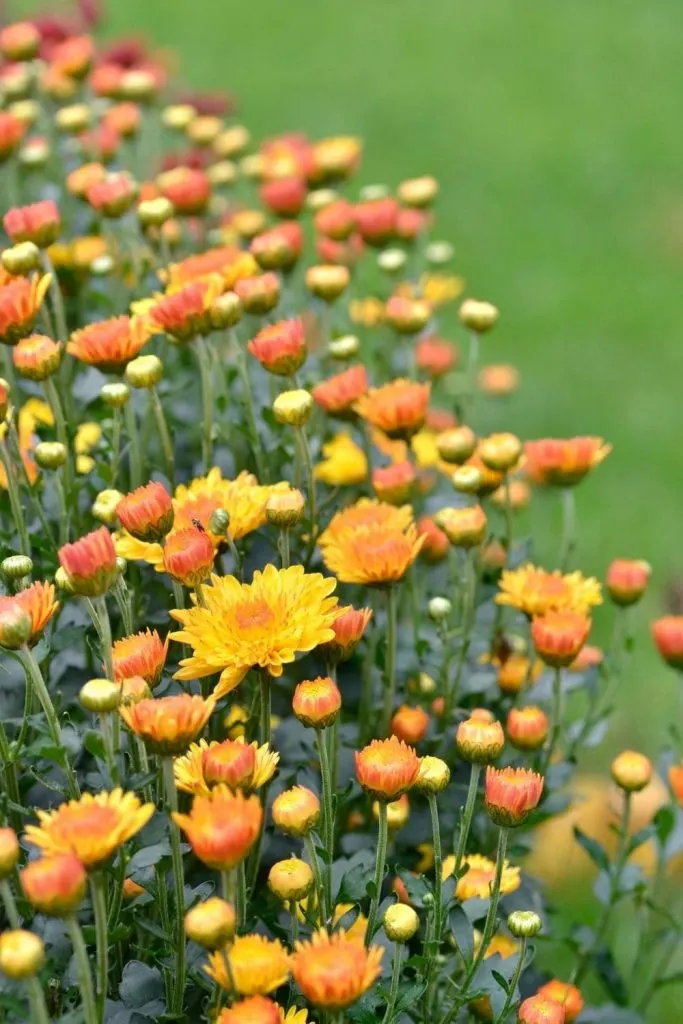
If the season has passed, wait until spring, a perfect time for establishing perennials like chrysanthemums. Avoid summer planting due to the stress caused by high temperatures.
Types of Mums
There are two main types of chrysanthemums: garden mums and florist mums. Garden mums, also known as fall or hardy mums, can tolerate cold and are suitable for fall planting to overwinter outdoors. Florist mums, often seen in gift pots, are hardy only in zones 7-9 and should be kept indoors during winter in colder climates.
Chrysanthemums can grow between 2-3 feet tall, though more compact varieties stay under 12 inches. They bloom from midsummer until the frost and are not aggressive, so they won’t take over your garden.
Planting Mums
Mums are excellent oxygen producers and are easy to plant and maintain. Here’s how to transplant them:
– Transplant on a cloudy day and keep them well-hydrated to minimize transplant shock.
– Space your mums 18-36 inches apart to ensure proper airflow and prevent overcrowding.
– Dig a hole slightly larger than the pot your chrysanthemums came in and amend the soil with compost.
– Gently remove your mums from the container and place them in the hole. Backfill with soil and lightly pat it down.
– Water your newly planted mums thoroughly to help the soil settle and reduce transplant shock.
Mulching
Once your mums are established, mulch them to protect their shallow roots from cold and drought. Mulching with compost or leaves helps regulate soil temperature and reduce evaporation. Lay 4-6 inches of mulch around your chrysanthemums before winter to insulate the soil. In spring, reduce the mulch to 2-3 inches.
Ideal Growing Conditions for Chrysanthemums
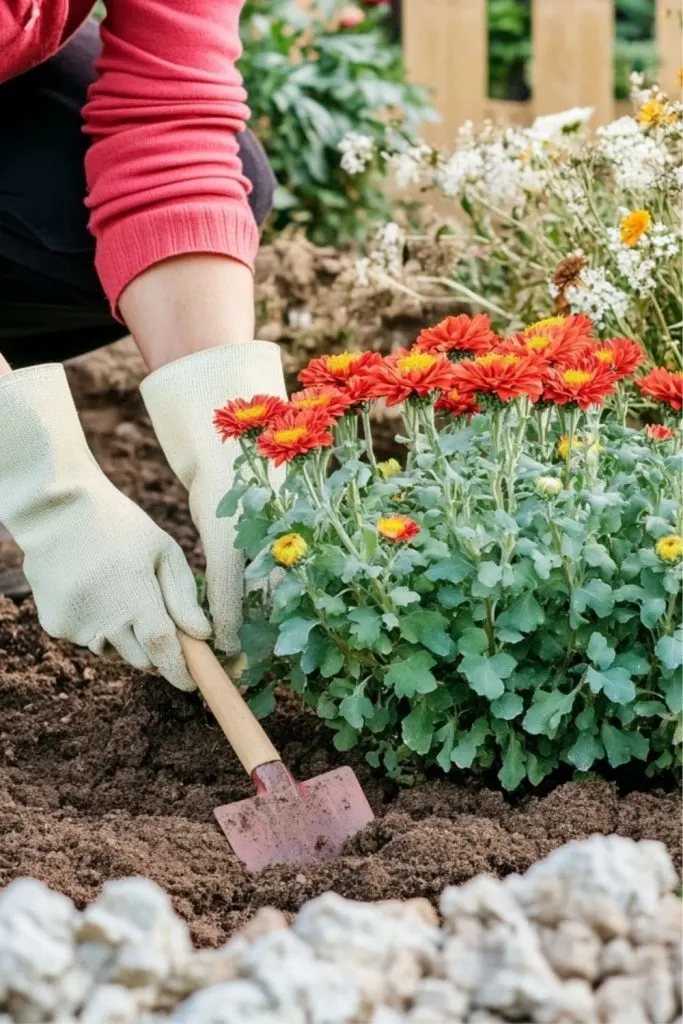
Transplanting chrysanthemums is straightforward, but ensuring they receive proper care is crucial for their growth. They thrive with plenty of sunlight, well-drained soil, and adequate water.
Light
Mums require at least 6-8 hours of direct sunlight daily to bloom abundantly. While they can survive in light shade, their blossoms will be fewer and less vibrant.
Water
Keep your chrysanthemums consistently moist but not waterlogged. Provide them with 1-2 inches of water per week, adjusting for rainfall.
Soil
Ensure the growing medium is nutrient-rich and well-draining. Amend garden soil with compost, or use high-quality potting soil for containers and raised beds.
Growing Mums in Pots and Raised Beds
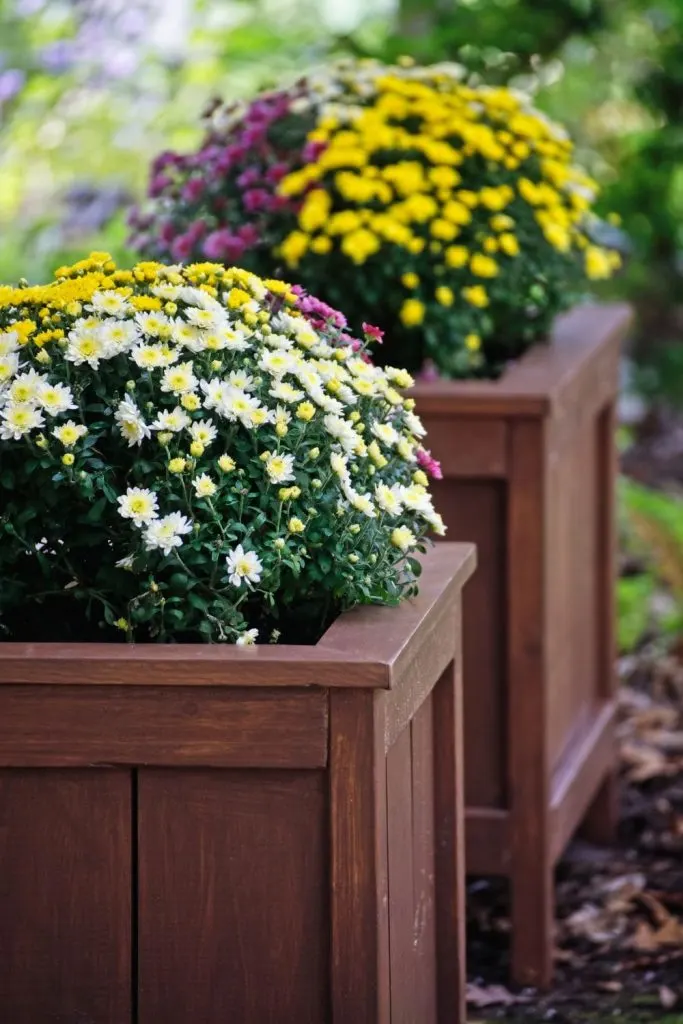
Adding chrysanthemums to your patio or garden is a delightful fall garden idea. Use a well-draining, fertile, and airy potting medium. Choose containers about 8 inches in diameter with drainage holes to prevent overwatering and root rot. For raised beds, place logs and branches at the bottom, then fill with a mixture of topsoil and compost.
Annual Maintenance
Maintaining mums is straightforward. Fertilizing, pruning, pinching, and weeding are key tasks.
Fertilizing
Feed your mums with an all-purpose fertilizer in spring to support new growth and prepare them for blooming.
Pruning
Employ deadheading to encourage more blooms and cut back the entire plant once stems are brown and wilted. Prune to 2-3 inches above the ground in late fall or early spring. Mulch thoroughly if pruning in fall.
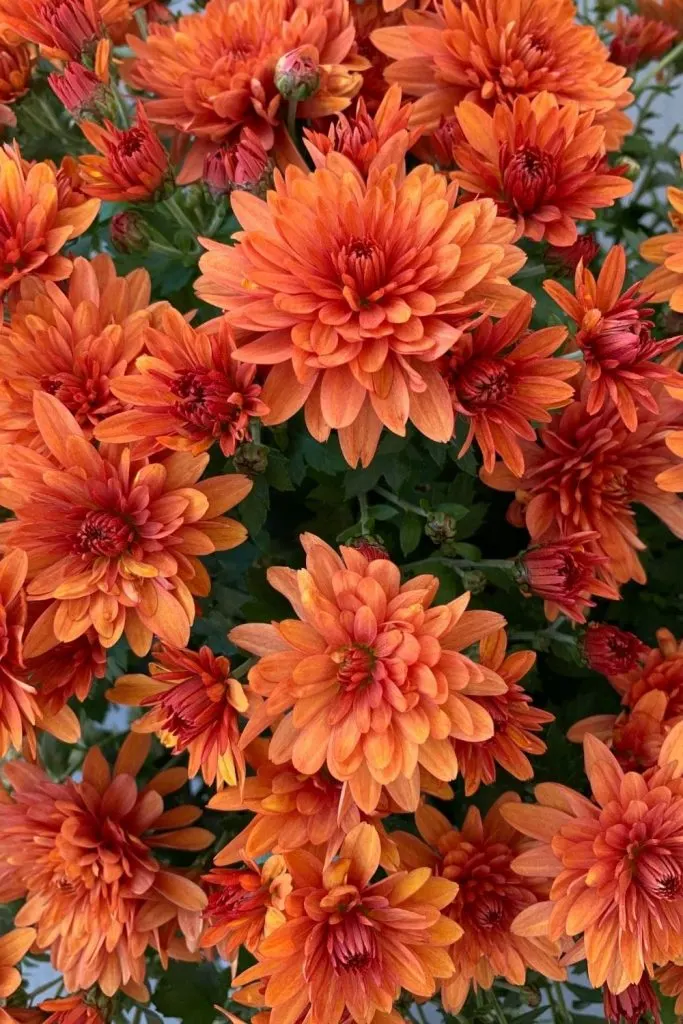
Pinching
Pinch early buds and flowers until July to redirect energy to roots and branches, ensuring a massive blooming season later.
Weeding
Remove weeds to reduce competition for moisture, nutrients, and sunlight. Mulching helps but manually removing weeds is also effective.
Missed the Planting Time?
If you miss the planting time, you can overwinter mums in pots. Keep them in a cool spot, but prevent freezing. Ensure they don’t dry out completely and transplant them in early spring after pruning.
If planting outdoors late, mulch with 4-6 inches to insulate the soil. Come spring, prune back to a couple of inches and reduce mulch to 2-3 inches. New growth should appear if the roots weren’t damaged by winter.
Are Mums Good Pollinator Magnets?
It depends on the variety. Simple mums like ‘Cremon,’ ‘Disbud,’ or ‘Hillside Sheffield Pink’ are excellent for attracting bees and butterflies.
Fall mums are a fantastic addition to your garden, offering colorful blooms and the ability to withstand harsh winters with minimal care.
Knowing the right planting time ensures the best results and vibrant color year after year. With just a bit of maintenance, these resilient plants will brighten your garden for many seasons.
